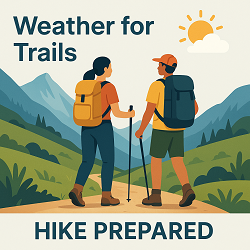Alorton, IL Weather Forecast and Current Conditions
Current Conditions From Nearby Local Station

Feels Like 40°F
at
Point Forecast at a Glance







7-Day Temperature Trend
Week Ahead Summary
Significant warming trend with high temperatures climbing from 54°F to 47°F, reaching a high of 56°F. Some rain possible with at least 2 days showing precipitation chances of 20% or higher.
Climate Context
This week's forecast shows temperatures running 5°F above the historical average for December. Normal highs for this period are around 45°F with lows around 27°F.
This Date in Weather History
1811 - An estimated Magnitude 7.5 earthquake struck the Mississippi Valley near the town of New Madrid in Missouri at 2:15 am local time. People were awakened by the shaking in New York City, Washington D.C., and Charleston, South Carolina. The ground motions were described as most alarming and frightening in places like Nashville, Tennessee, and Louisville, Kentucky. In the epicentral area, the ground surface was described as in great convulsion with sand and water ejected tens of feet into the air.
Alorton, IL 7 Day Weather Forecast Details
Tuesday Dec 16

Night: Mostly cloudy, with a low around 37. Southwest wind 5 to 8 mph.
Wednesday Dec 17

Day: Sunny, with a high near 54. Calm wind becoming southeast 5 to 7 mph in the afternoon.

Night: A 30 percent chance of showers after midnight. Increasing clouds, with a temperature rising to around 52 by 4am. South wind 7 to 14 mph, with gusts as high as 25 mph.
Thursday Dec 18

Day: Showers and possibly a thunderstorm before noon, then a chance of showers between noon and 3pm. Temperature rising to near 55 by 8am, then falling to around 46 during the remainder of the day. South wind 14 to 16 mph becoming west in the afternoon. Winds could gust as high as 28 mph. Chance of precipitation is 90%.

Night: Partly cloudy, with a low around 23. Northwest wind 9 to 17 mph, with gusts as high as 28 mph.
Friday Dec 19

Day: Sunny, with a high near 39.

Night: Partly cloudy, with a low around 33.
Saturday Dec 20

Day: Mostly sunny, with a high near 56.

Night: Mostly cloudy, with a low around 32.
Sunday Dec 21

Day: Mostly sunny, with a high near 46.

Night: Mostly cloudy, with a low around 32.
Monday Dec 22

Day: Partly sunny, with a high near 47.

Night: Mostly cloudy, with a low around 39.
Tuesday Dec 23

Day: Partly sunny, with a high near 57.
About Alorton, IL
Content from Wikipedia, licensed under CC BY-SA 3.0.
How We Provide Better Local Weather
Current conditions: We use the nearest available station to your location - including professional MESONET/MADIS and local weather stations - often miles closer than regional airports.
Forecasts: National Weather Service point forecasts predict for your specific area, not broad regional zones, making them far more relevant to your location.



